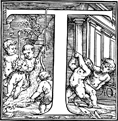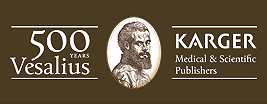
he quest for the grave of Andreas Vesalius has just entered a new phase. In view of the Vesalius Continuum Conference on Zakynthos in September 4-8, 2014, Theo Dirix, Belgian Consul in Athens, coordinates the latest efforts to help Pascale Pollier find the lost remains of the anatomist. Sponsored by Agfa HealthCare, a renowned Cretan research center is drawing a digital map of the area where they situate his tomb.
by Theo Dirix
In April 2013, I invited Professor Jan Driessen (Université Catholique de Louvain, UCL) and Director of the Belgian School (for archaeology) in Athens (EBSA), together with Dr Apostolos Sarris, Deputy Director of the Cretan Institute for Mediterranean Studies - Foundation for Research and Technology Hellas (IMS-FORTH) to the Ionian island of Zakynthos in Greece. We met with local municipal and archaeological authorities to initiate a new attempt to find the grave of Andreas Vesalius.
In the footsteps of Nicolas Barbianis, the "savior of the ruins of the earthquake of 1953", we explored the rural area of Kalogerata, just off Laganas beach. Although a mythical place, the site doesn't offer enough material to withstand the historical, geographical and judicial controversy that marks Barbianis' favorite hypothesis. This conclusion does not, in any way, weaken the key role Barbianis played to keep the memory of Vesalius on Zakynthos alive.
Belgian researchers Omer Steeno, Maurits Biesbrouck and Theodoor Goddeeris, and the Greek historian and blogger Pavlos Plessas discovered unknown testimonies going back to 1565 and 1586. They indicate that the grave is more likely situated in the Santa Maria delle Grazie church in Zakynthos town.Sacked by invaders, destroyed by multiple earthquakes and converted to army barracks, the Catholic church vanished under the urban network that rose from the ashes of the most devastating earthquake of August 1953.
To try to locate the original position of the church and its neighbouring structures, a set of various historical and recent maps and plans has been collected. The approach of comparing and correcting mapped data, topographically checked on the ground, is compatible to current trends of Historical GIS / Spacial History.
Pavlos Plessas provided copies of maps dated from the early 17th until the late 18th century. Akis Ladikos, Deputy-Mayor of Zakynthos, supplied pre- and post-earthquake cadastral maps. Together with high resolution satellite and older aerial images, a Geographical Information Systems (G.I.S.) is now being developed by Sylviane Déderix, Belgian Research Fellow of the National Fund for Scientific Research, UCL and IMS-Forth.
It took me almost a year to find the necessary funds to bring all efforts together. Fortunately, in February 2014, the world leader in medical imagery, Agfa HealthCare, part of the Belgian Group Agfa Gevaert, acknowledged how close this project is to their core business and enthusiastically offered its support.
Depending on the results of the GIS and some more sponsoring, a geophysical approach may follow, employing non-destructive ground penetrating radar (GPR) and electrical resitivity tomography (ERT) methods only. Planning possible excavations is premature at this stage, but depending on substantial evidence, a number of test or rescue excavation trenches -not lasting more than a week- may be needed to validate the results.
We should never exclude either that buildings in the particular area are torn down, as happened unexpectedly in the summer of 2013; as expected that construction site, on the edge of the surrounding plot of the church, did not offer any substantial findings.
With the continuous support of all of the above, we will definitely be able to present interesting results during our upcoming Vesalius Continuum Conference on Zakynthos in September 2014.
But even if we run out of time or funds, a new reference point in the search for the lost grave will have been set for future Vesalian grave searchers.
If you want to help carry out this historical quest: andreas@vesalius2014.be
If you want to register for the conference: https://www.vesalius2014.synedry.com/home.aspx
